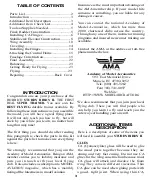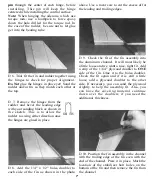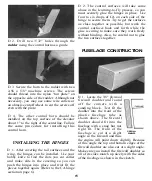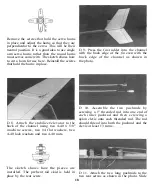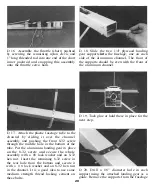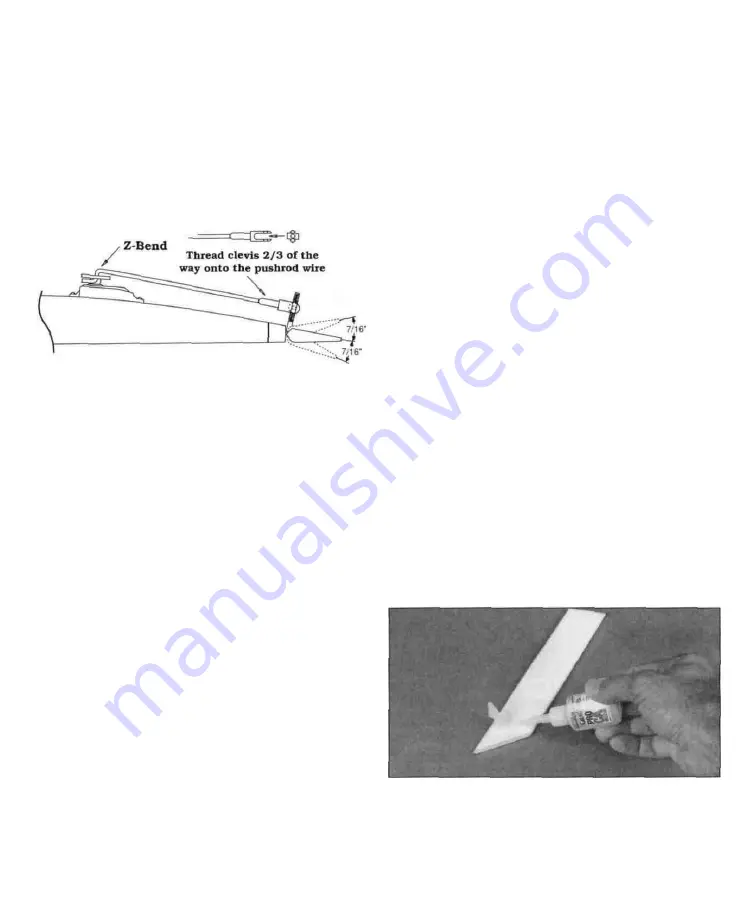
wing if necessary to make the protector lie
flat against the wing. When satisfied with
the fit, remove the servo. Use coarse
sandpaper to roughen the bottom of the wing
protector so the glue will hold better. Use
epoxy to glue the protector in place.
D 5. Trial fit the ailerons for this step. Mount
the aileron servo with the screws provided in
the radio system and assemble the pushrods
as shown in the sketch above. Attach the
pushrods to the torque rods by screwing the
Aileron Clevis Connector onto the threaded
portion of the torque rod. Use a pair of needle
nose pliers to make the Z-bends and attach
them to the servo horn. Turn on your radio.
plug in your aileron servo and adjust the
centering of the servo horn u n t i l it is
centered and the right aileron moves up
when you move the transmitter stick to the
right. Adjust the nylon clevis until each
aileron is in a neutral position when the
transmitter sticks and trims are centered.
Also adjust the position of the nylon clevis
connector on the torque rod to achieve 7/16"
of up and down movement.
COVERING
D 1. The tail surfaces (fin, rudder, stabilizer
and elevator) should be covered with one of
the iron-on coverings to help protect them
from becoming fuel soaked and ruined. If you
are also going to cover the wing, which will
help it look nicer longer (and add a
small amount of strength), you can save a
little money by buying only one roll of low
temperature covering (EconoKote, Black
Baron Film, etc.) and using it for both the
wing and the tail surfaces. Otherwise you can
use any type of covering for the tail surfaces,
but remember to use a low heat covering for
the wing. A few stripes or your AMA number
can really add to the looks of your STURDY
BIRDY II.
D 2. Follow the instructions that come with
the covering and cover the tail surfaces at
this time. It is a good idea to cover the bottom
surfaces first to get familiar with the covering
since these surfaces will normally not be
seen. When covering the wing, cover right
over the tape and plastic wing protector. Try
to use as little heat as possible.
ATTACHING THE CONTROL HORNS
D 1. Position the nylon control horn on the
left side of the rudder about 1" up from the
bottom with the four holes lined up with the
leading edge. Use a drop of Thin CA to tack
glue the horn in place.
14



